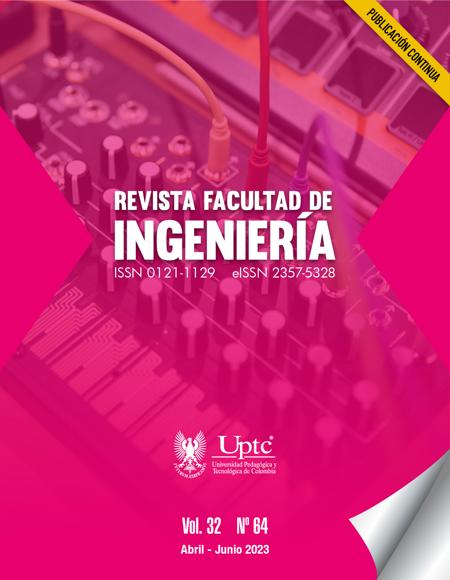Orientation System Using Augmented Reality for Universities

Abstract
Augmented reality has been used in a variety of applications, including navigation, gaming, education, among others. This technology allows users to superimpose computer generated images on top of the real world environment. This article explores the potential of augmented reality to improve the orienteering experience for people unfamiliar with their surroundings. It describes how technology could be used to provide information and indications in the form of visual signals through the smartphone camera on the spaces of the Colegio Mayor del Cauca University Institution. In this way, students are provided with a tool to promote adequate compliance with the academic calendar and increase the adaptability of first-year students or the beginning of the semester.
For the development of this idea, an experimental methodology is used to create and test a protot
Augmented reality has been applied to different fields including navigation, gaming, and education. This technology allows users to superimpose computer generated images on top of the real-world environment. This article explores the potential of augmented reality to improve the orientation experience for people unfamiliar with their surroundings. It describes how technology could be used to provide information and indications in the form of visual signals through the smartphone camera in the facilities of the Colegio Mayor del Cauca University Institution. In this way, first-year students are provided with a tool to increase the adaptability and, in general, to promote compliance with the academic calendar at the beginning of the semester.
To develop this idea, an experimental methodology is used to create and test a prototype with potential users. The results show that the use of augmented reality can help people to find their way more easily without incurring interruptions of academic activities.
ype with potential users. The results show that the use of augmented reality can help people to find their way more easily without incurring interruptions of academic activities.
Keywords
augmented reality, mobile devices, overlap, spaces
References
- P. S. A. A. Nirma Jayawardena, “The persuasion effects of virtual reality (VR) and augmented reality (AR) video advertisements: A conceptual review,” Journal of Business Research, vol. 160, no. 21, e02 2023. https://doi.org/10.1016/j.jbusres.2023.113739 DOI: https://doi.org/10.1016/j.jbusres.2023.113739
- Fundación Telefónica, Realidad aumentada: una nueva lente para ver el mundo, 2011. https://educalibre.info/wp-content/uploads/2018/07/Realidad_Aumentada_Completo.pdf
- A. A. Almjawel, N. A. Alerbeed, A. S. Alogily, G. M. Alotaibi, “Campus Guide Using Augmented Reality Techniques,” in 3rd International Conference on Computer Applications & Information Security, 2020, pp. 1-4. https://doi.org/10.1109/ICCAIS48893.2020.9096723 DOI: https://doi.org/10.1109/ICCAIS48893.2020.9096723
- C. A. Sandoval, L. V. Carvajal-Beltrán, “Aplicación móvil de realidad aumentada para la ubicación de las aulas de clase en el Campus Porvenir de la Universidad de la Amazonia,” Revista Científica, vol. 26, pp. 84–94, 2016. https://doi.org/10.14483/23448350.11095 DOI: https://doi.org/10.14483/23448350.11095
- Project Management Institute, La guía de los fundamentos para la dirección de proyectos, 2017. https://www.academia.edu/40973725/Gu%C3%ADa_del_PMBOK_sexta_edicion_espa%C3%B1ol
- WordPress, Programación Extrema XP, 2019. https://ingsoft1unne.wordpress.com/2019/03/21/programacion-extrema-xp/
- P. Letelier, C. Penadés, “Metodologías ágiles para el desarrollo de software: eXtreme Programming (XP),” Técnica Administrativa, vol. 5, no. 26, pp. 1-15 2006.
- Linio, Blog Linio, 2017. https://blog.linio.com.co/realidad-virtual-realidad-aumentada/?adjust_t=1zira0_f1h7ws&adjust_google_network=x&adjust_google_placement=&adjust_campaign=LICO-LAB-AO-INSTI-INS00019-General-Abr22-GG-Performance_Max-Conversion-Mix&adjust_adgroup=&utm_term=
- Firebase, Firebase, 2021. https://firebase.google.com
- R. Włodarski, A. Poniszewska-Marańda, J.-R. Falleri, “Impact of software development processes on the outcomes of student computing projects: A tale of two universities,” Information and Software Technology, vol. 144, e106787, 2022. https://doi.org/10.1016/j.infsof.2021.106787 DOI: https://doi.org/10.1016/j.infsof.2021.106787
- L. Martín-Forero, A. Barriuso, I. Bosque, “Webmapping y visualización de datos científicos en las humanidades digitales,” en XVIII Congreso Nacional TIG, 2018. http://hdl.handle.net/10261/166984